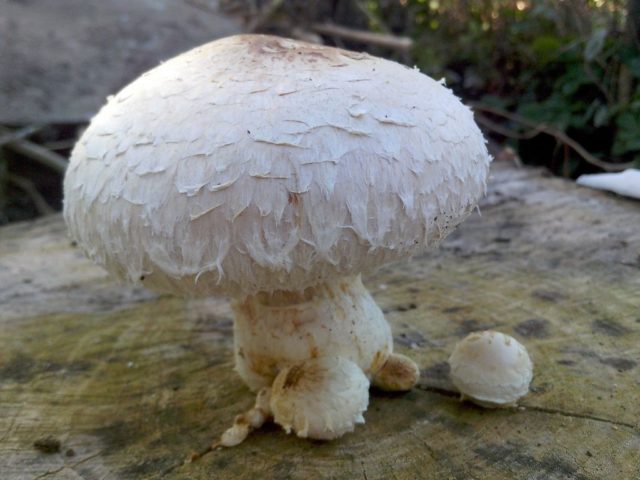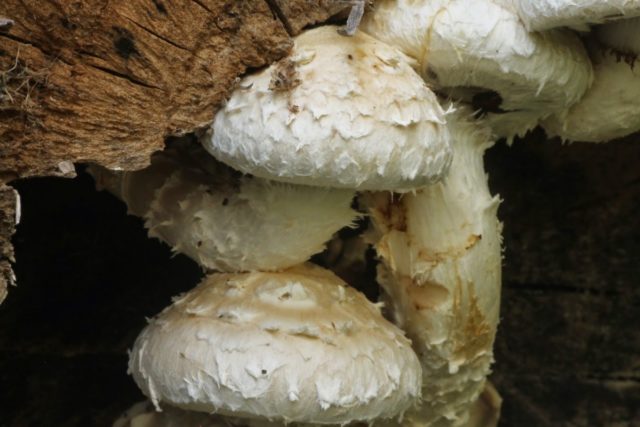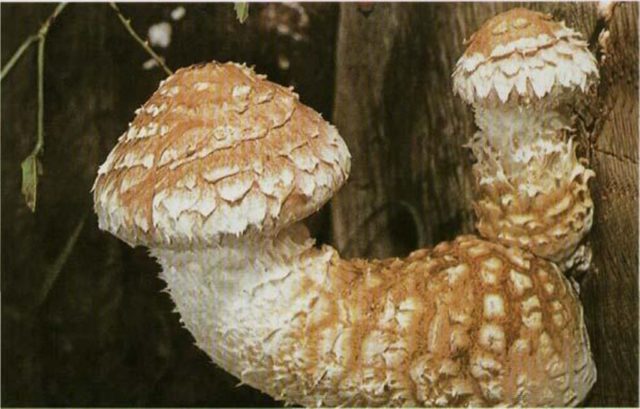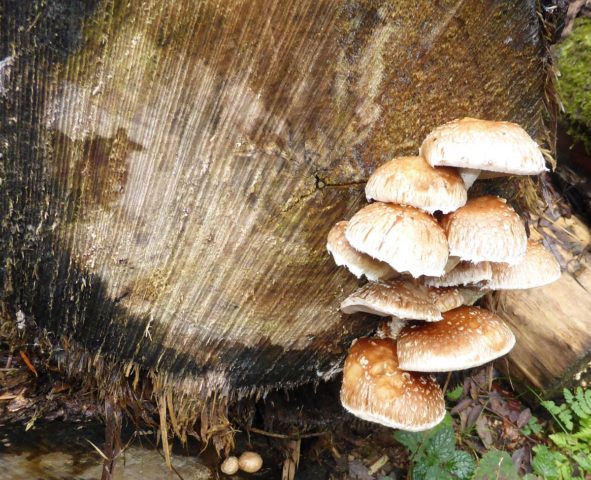Content
Destructive chashuychatka is an inedible mushroom, which got its name for the rapid destruction of wood. The species belongs to the Strophariev family and is very similar in appearance to champignons. It can be found on stumps, dying and decaying trees. In order not to collect poisonous specimens during mushroom hunting, you need to familiarize yourself with the varietal characteristics and view the photo.
What does a mushroom look like?
Destructive calyx or poplar calyx is a cap-toothed variety of the foliot genus. Received the name for the scaly body and for the preference to grow on poplars, their rhizomes, thereby gradually destroying the wood. Acquaintance with an inedible specimen must begin with varietal characteristics.
Description of the hat
The light brown or lemon-white surface of the cap, 5-7 cm in diameter, is completely covered with numerous cream-colored scales. The hat has a hemispherical shape with corrugated and fibrous edges. The pulp is dense, white, with age it acquires a dark brown color. The lower part is crowned with numerous dark plates and is covered with a dense light film, which breaks with the age of the fungus and adorns the leg in the form of a ring.
Leg description
The leg of a crumbling poplar scale is 10-15 cm high, painted in the color of the cap. Large snow-white scales cover the young surface and disappear over time. The pulp is dense, fibrous, has an unpleasant aroma and bitter taste. With age, the taste changes to sugary-sweet.
Is the mushroom edible or not
Scales that destroy pholiota destruenus are inedible varieties. Therefore, after consumption, it can cause food poisoning.
Where and how it grows
Poplar scales prefer to grow on stumps and dying deciduous trees. It grows in small groups or in single specimens in the Far East, Siberia, central Russia, the Crimea and the Caucasus. Fruiting occurs from early July to late September.
Doubles and their differences
The inedible scaly destructor has edible and poisonous counterparts. These include:
- Scale golden... An edible specimen. The diameter of the broadly bell-shaped, rusty-lemon cap is 18 cm, the surface is covered with large reddish scales. Juicy flesh of light cream color. Lemon-brown stem, 10 cm high, covered with numerous orange-brown scales. It grows in families on the trunks of deciduous trees or on their rhizomes. Fruiting occurs from August to October.
- Cinder flakes - a poisonous specimen. A hemispherical hat, 6 cm in diameter, opens up with age and takes on a flat shape. Fleshy pulp of light lemon color, odorless and tasteless. The fibrous stem reaches 6 cm and is dotted with numerous dark red scales. Fruiting from May to October. It prefers to grow on charred wood and in places of old fires.Important! With the use of a poisonous double, mild food poisoning can occur.
Conclusion
Destructive flakes are an inedible species of the Strophariev family. Experienced mushroom pickers advise before mushroom hunting to carefully study all types of poisonous mushrooms, as they can cause irreparable harm to health. If an unknown species is found, it is better to pass by, this can protect yourself and your loved ones.














